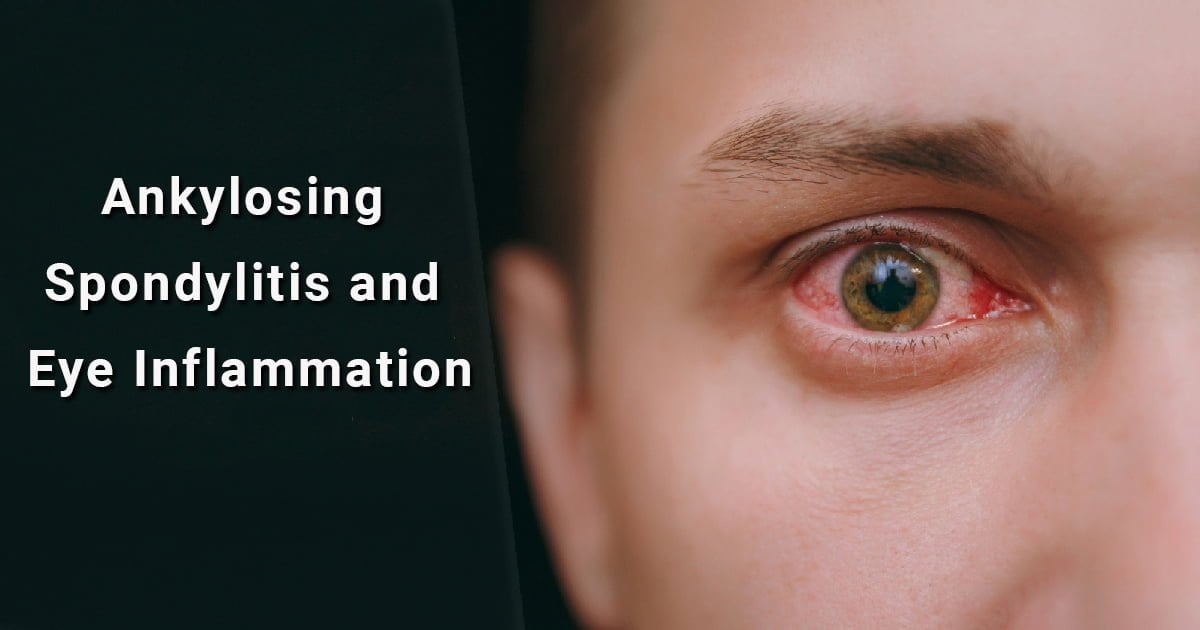Ankylosing spondylitis or AS is a type of inflammatory disease. This disease also refers to severe stiffness and inflammation in the spine. It causes aching and pain around the spine and pelvis. While Ankylosing spondylitis is common in the spine and large joints, it may also occur in other areas of the body, such as the eyes, in this case, it is known as Uveitis. Near about 40-50 percent of people with AS develop eye inflammation or uveitis. The prevalence of ankylosing spondylitis is most common in men 17-35 years of age. Moreover in women, the symptoms of this disorder often appear during pregnancy for the first time.
Uveitis is an inflammation of the front part of the eye called the uvea, including the iris and ciliary body. The cause of uveitis is unknown, however, the immune response associated with ankylosing spondylitis that causes the spinal problems are most likely similar to the inflammation seen with uveitis. There are several other causes of uveitis as well, but this disease has more chances to occur when ankylosing spondylitis is present.
Why does eye inflammation (uveitis) develop?
AS is an elemental disease, which means it may impact multiple areas of the body and cause widespread inflammation. The main causative factor considered for this disease is the HLA-B27 gene, as it is proved that this gene is present in many people who have ankylosing spondylitis.
Other conditions that share the gene include inflammatory bowel disease and reactive arthritis. Uveitis proves to be the first sign that you have when a systemic condition such as AS pertains. Uveitis may also occur independently of other inflammatory conditions.
How are ankylosing spondylitis related Eye Problems Treated and Diagnosed?
The diagnosis of ankylosing spondylitis is made on the basis of the patient’s history, a physical examination, X-ray films, and laboratory tests.
A cure for ankylosing spondylitis does not currently exist in allopathy; however, effective treatment options can relieve pain and improve a person’s condition. The general approach to treatment includes medication, physical therapy, and ayurvedic therapies. The major Ayurveda procedures which are done for the permanent treatment of uveitis in Ayurveda are Snehapana, Abhyanga & Swedana, Virechana, Nasya, Netradhara, Anjana & Aschyotana, Thakradhara and Tharpana.
What Are the Symptoms of Anterior Uveitis?
Uveitis usually impacts one eye at a time, although it can develop in both the eyes. It may happen suddenly and become severe at a faster pace of time, or it can develop slowly and worsen over several weeks. The most common symptom of uveitis is redness in the front of the eye. Other symptoms of uveitis may include eye redness, photophobia or light sensitivity, pain in the eye, and blurred, cloudy vision. There also occurs a discharge from the eyes which is quite uncommon. The pain in the eye is deep which is made worse by being in contact with bright light. The symptoms usually develop over a few hours.
Diagnosis of uveitis
The primary step in the diagnosis of Uveitis is reviewing your medical history and a complete eye check-up.
There are various tests to diagnose uveitis such as –
- Eye chart test– This test is done to determine if your vision has declined or not.
- Fundoscopic exam– or ophthalmoscopy is performed to examine the back of the eye
- Ocular pressure test – to measure the pressure of the eye.
- A slit lamp exam to examine the complete eye, including the blood vessels of your eye.
- Imaging tests, such as an X-ray or MRI, to view your joints and bones.
- In rare cases, the doctor may also perform a blood test to check for the HLA-B27 gene.
How is eye inflammation or Uveitis Treated?
The uveitis can be treated very efficiently with the help of Ayurveda. There are various ayurvedic medicines and therapies that help in curing eye inflammation or uveitis.
According to Ayurveda, the uveitis is caused by an imbalance in Vata and pitta dosha. This imbalance in Vata and pitta doshas can be caused by various factors such as an Imbalanced lifestyle, materialistic targets in life, disdain for life goals, eating habits, and disturbed sleeping patterns that work together to decrease the immunity of the cells.
Therefore to cure this imbalance in these Vata and pitta doshas and to provide relief to your body from the cellular stress, a complete toxicity removal process is required for the body. This is done with the help of various ayurvedic and Panchakarma therapies.
The major Ayurveda therapies which are helpful in uveitis treatment being done in an Ayurvedic eye hospital are as follows: Snehapana, Abhyanga, Swedana, Virechana, Nasya, Netradhara, Anjana & Aschyotana, Thakradhara, and Tharpana.
Preventions to protect Your Eyes from eye inflammation or Uveitis
- Uveitis or AS can be treated at home with some minor home remedies such as –
- An annual eye exam is a must, and if you have been diagnosed with uveitis, you may need to see an eye specialist more frequently.
- You should wear protective eyewear or glasses when you’re playing or moving outside.
- Wear sunglasses that are designed for blocking the ultraviolet rays on sunny days.
- A break for your eyes is a must – While performing closeup tasks with the monitor or screen, for a long time, give your eyes a 20-second rest by looking 20 feet in the distance.

